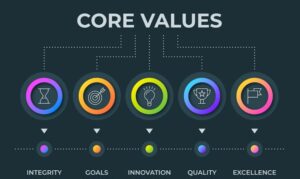
by admin | Sep 26, 2022 | news, Search Engine Optimization
Gunia or Sacks For Sale in Kenya: Quality gunia bags also known as sacks are available at wholesale prices from the best packaging company in Nairobi, where they deliver them all over the country. GUNIA/Sacks available from 5kg to 90kg at amazing prices for both wholesale and retail options. Here, you can find multiple colours from Green, White with red stripes on the sides. You can also find the clear bags
Delivery
Customers all over Kenya can now enjoy products at their convenience. This is possible due to the wide range of courier services that ply their route. Now. getting goods say to Kisumu or Mombasa from our shop in Nairobi is just a call away. All you have to do is logon to swisspackaging.co.ke, choose the khaki packaging bags or any products you want. Upon agreement of the quantities and delivery options, we will disburse the goods right away. In less than 24 hours, your goods will be right at your place of choice.
Support
Our team is concerned about your convenience. Therefore, no more queuing on long lines and longer travelling hours to buy our products. You should not have issues with choice, pricing and any other query you might be having. Our support team is working around the clock to ensure that your order, query, compliment or complaint is attended to at the shortest time possible.
In this regards, you can talk to us on below avenues and get assisted real time. Facebook, Instagram, Twitter, Call, Email or WhatsApp. Call us on 0720334926 | 0728517267 | 0790115435 and 0734875320.
Location
Visit their shop today in Nairobi today and enjoy a new wide shopping space. They are located at OTC Building, opposite Ola Energy, racecourse Nairobi.
Similarly, find them on Google Maps on Swiss Packaging On Google.
Buy Now
Head over to the shop and buy and order Gunia or Sacks For Sale in Kenya and other products at affordable prices in town.
Would you like to have your business seen by potential customers? Enroll to our Digital Marketing Services, Webs design or Search Engine Optimization support.

by admin | Sep 25, 2022 | Digital Marketing, news
Meeting the Challenge of Disruptive Change: It’s no wonder that innovation is so difficult for established firms. They employ highly capable people—and then set them to work within processes and business models that doom them to failure. But there are ways out of this dilemma. By Clayton M. Christensen and Michael Overdorf
These are scary times for managers in big companies. Even before the Internet and globalization, their track record for dealing with major, disruptive change was not good. Out of hundreds of department stores, for example, only one—Dayton Hudson—became a leader in discount retailing. Not one of the minicomputer companies succeeded in the personal computer business. Medical and business schools are struggling—and failing—to change their curricula fast enough to train the types of doctors and managers their markets need. The list could go on.
It’s not that managers in big companies can’t see disruptive changes coming. Usually they can. Nor do they lack resources to confront them. Most big companies have talented managers and specialists, strong product portfolios, first-rate technological know-how, and deep pockets. What managers lack is a habit of thinking about their organization’s capabilities as carefully as they think about individual people’s capabilities.
One of the hallmarks of a great manager is the ability to identify the right person for the right job and to train employees to succeed at the jobs they’re given. But unfortunately, most managers assume that if each person working on a project is well matched to the job, then the organization in which they work will be, too. Often that is not the case. One could put two sets of identically capable people to work in different organizations, and what they accomplished would be significantly different. That’s because organizations themselves—independent of the people and other resources in them—have capabilities. To succeed consistently, good managers need to be skilled not just in assessing people but also in assessing the abilities and disabilities of their organization as a whole.
This article offers managers a framework to help them understand what their organizations are capable of accomplishing. It will show them how their company’s disabilities become more sharply defined even as its core capabilities grow. It will give them a way to recognize different kinds of change and make appropriate organizational responses to the opportunities that arise from each. And it will offer some bottom-line advice that runs counter to much that’s assumed in our can-do business culture: if an organization faces major change—a disruptive innovation, perhaps—the worst possible approach may be to make drastic adjustments to the existing organization. In trying to transform an enterprise, managers can destroy the very capabilities that sustain it.
Before rushing into the breach, managers must understand precisely what types of change the existing organization is capable and incapable of handling. To help them do that, we’ll first take a systematic look at how to recognize a company’s core capabilities on an organizational level and then examine how those capabilities migrate as companies grow and mature.
Where Capabilities Reside In Meeting the Challenge of Disruptive Change
Our research suggests that three factors affect what an organization can and cannot do: its resources, its processes, and its values. When thinking about what sorts of innovations their organization will be able to embrace, managers need to assess how each of these factors might affect their organization’s capacity to change.
Resources.

When they ask the question, “What can this company do?” the place most managers look for the answer is in its resources—both the tangible ones like people, equipment, technologies, and cash, and the less tangible ones like product designs, information, brands, and relationships with suppliers, distributors, and customers. Without doubt, access to abundant, high-quality resources increases an organization’s chances of coping with change. But resource analysis doesn’t come close to telling the whole story.
Processes.
The second factor that affects what a company can and cannot do is its processes. By processes, we mean the patterns of interaction, coordination, communication, and decision making employees use to transform resources into products and services of greater worth. Such examples as the processes that govern product development, manufacturing, and budgeting come immediately to mind. Some processes are formal, in the sense that they are explicitly defined and documented. Others are informal: they are routines or ways of working that evolve over time. The former tend to be more visible, the latter less visible.
One of the dilemmas of management is that processes, by their very nature, are set up so that employees perform tasks in a consistent way, time after time. They are meant not to change or, if they must change, to change through tightly controlled procedures. When people use a process to do the task it was designed for, it is likely to perform efficiently. But when the same process is used to tackle a very different task, it is likely to perform sluggishly. Companies focused on developing and winning FDA approval for new drug compounds, for example, often prove inept at developing and winning approval for medical devices because the second task entails very different ways of working. In fact, a process that creates the capability to execute one task concurrently defines disabilities in executing other tasks.1
The most important capabilities and concurrent disabilities aren’t necessarily embodied in the most visible processes, like logistics, development, manufacturing, or customer service. In fact, they are more likely to be in the less visible, background processes that support decisions about where to invest resources—those that define how market research is habitually done, how such analysis is translated into financial projections, how plans and budgets are negotiated internally, and so on. It is in those processes that many organizations’ most serious disabilities in coping with change reside.
Values.

The third factor that affects what an organization can and cannot do is its values. Sometimes the phrase “corporate values” carries an ethical connotation: one thinks of the principles that ensure patient well-being for Johnson & Johnson or that guide decisions about employee safety at Alcoa. But within our framework, “values” has a broader meaning. We define an organization’s values as the standards by which employees set priorities that enable them to judge whether an order is attractive or unattractive, whether a customer is more important or less important, whether an idea for a new product is attractive or marginal, and so on. Prioritization decisions are made by employees at every level. Among salespeople, they consist of on-the-spot, day-to-day decisions about which products to push with customers and which to de-emphasize. At the executive tiers, they often take the form of decisions to invest, or not, in new products, services, and processes.
The larger and more complex a company becomes, the more important it is for senior managers to train employees throughout the organization to make independent decisions about priorities that are consistent with the strategic direction and the business model of the company. A key metric of good management, in fact, is whether such clear, consistent values have permeated the organization.
But consistent, broadly understood values also define what an organization cannot do. A company’s values reflect its cost structure or its business model because those define the rules its employees must follow for the company to prosper. If, for example, a company’s overhead costs require it to achieve gross profit margins of 40%, then a value or decision rule will have evolved that encourages middle managers to kill ideas that promise gross margins below 40%. Such an organization would be incapable of commercializing projects targeting low-margin markets—such as those in e-commerce—even though another organization’s values, driven by a very different cost structure, might facilitate the success of the same project.
Different companies, of course, embody different values. But we want to focus on two sets of values in particular that tend to evolve in most companies in very predictable ways. The inexorable evolution of these two values is what makes companies progressively less capable of addressing disruptive change successfully.
As in the previous example, the first value dictates the way the company judges acceptable gross margins. As companies add features and functions to their products and services, trying to capture more attractive customers in premium tiers of their markets, they often add overhead cost. As a result, gross margins that were once attractive become unattractive. For instance, Toyota entered the North American market with the Corona model, which targeted the lower end of the market. As that segment became crowded with look-alike models from Honda, Mazda, and Nissan, competition drove down profit margins. To improve its margins, Toyota then developed more sophisticated cars targeted at higher tiers. The process of developing cars like the Camry and the Lexus added costs to Toyota’s operation. It subsequently decided to exit the lower end of the market; the margins had become unacceptable because the company’s cost structure, and consequently its values, had changed.
In a departure from that pattern, Toyota recently introduced the Echo model, hoping to rejoin the entry-level tier with a $10,000 car. It is one thing for Toyota’s senior management to decide to launch this new model. It’s another for the many people in the Toyota system—including its dealers—to agree that selling more cars at lower margins is a better way to boost profits and equity values than selling more Camrys, Avalons, and Lexuses. Only time will tell whether Toyota can manage this down-market move. To be successful with the Echo, Toyota’s management will have to swim against a very strong current—the current of its own corporate values.
The second value relates to how big a business opportunity has to be before it can be interesting. Because a company’s stock price represents the discounted present value of its projected earnings stream, most managers feel compelled not just to maintain growth but to maintain a constant rate of growth. For a $40 million company to grow 25%, for instance, it needs to find $10 million in new business the next year. But a $40 billion company needs to find $10 billion in new business the next year to grow at that same rate. It follows that an opportunity that excites a small company isn’t big enough to be interesting to a large company. One of the bittersweet results of success, in fact, is that as companies become large, they lose the ability to enter small, emerging markets. This disability is not caused by a change in the resources within the companies—their resources typically are vast. Rather, it’s caused by an evolution in values.
The problem is magnified when companies suddenly become much bigger through mergers or acquisitions. Executives and Wall Street financiers who engineer megamergers between already-huge pharmaceutical companies, for example, need to take this effect into account. Although their merged research organizations might have more resources to throw at new product development, their commercial organizations will probably have lost their appetites for all but the biggest blockbuster drugs. This constitutes a very real disability in managing innovation. The same problem crops up in high-tech industries as well. In many ways, Hewlett-Packard’s recent decision to split itself into two companies is rooted in its recognition of this problem.
The Migration of Capabilities
In the start-up stages of an organization, much of what gets done is attributable to resources—people, in particular. The addition or departure of a few key people can profoundly influence its success. Over time, however, the locus of the organization’s capabilities shifts toward its processes and values. As people address recurrent tasks, processes become defined. And as the business model takes shape and it becomes clear which types of business need to be accorded highest priority, values coalesce. In fact, one reason that many soaring young companies flame out after an IPO based on a single hot product is that their initial success is grounded in resources—often the founding engineers—and they fail to develop processes that can create a sequence of hot products.

Avid Technology, a producer of digital-editing systems for television, is an apt case in point. Avid’s well-received technology removed tedium from the video-editing process. On the back of its star product, Avid’s stock rose from $16 a share at its 1993 IPO to $49 in mid-1995. However, the strains of being a one-trick pony soon emerged as Avid faced a saturated market, rising inventories and receivables, increased competition, and shareholder lawsuits. Customers loved the product, but Avid’s lack of effective processes for consistently developing new products and for controlling quality, delivery, and service ultimately tripped the company and sent its stock back down.
By contrast, at highly successful firms such as McKinsey & Company, the processes and values have become so powerful that it almost doesn’t matter which people get assigned to which project teams. Hundreds of MBAs join the firm every year, and almost as many leave. But the company is able to crank out high-quality work year after year because its core capabilities are rooted in its processes and values rather than in its resources.
When a company’s processes and values are being formed in its early and middle years, the founder typically has a profound impact. The founder usually has strong opinions about how employees should do their work and what the organization’s priorities need to be. If the founder’s judgments are flawed, of course, the company will likely fail. But if they’re sound, employees will experience for themselves the validity of the founder’s problem-solving and decision-making methods. Thus processes become defined. Likewise, if the company becomes financially successful by allocating resources according to criteria that reflect the founder’s priorities, the company’s values coalesce around those criteria.
Meeting the Challenge of Disruptive Change
As successful companies mature, employees gradually come to assume that the processes and priorities they’ve used so successfully so often are the right way to do their work. Once that happens and employees begin to follow processes and decide priorities by assumption rather than by conscious choice, those processes and values come to constitute the organization’s culture.2 As companies grow from a few employees to hundreds and thousands of them, the challenge of getting all employees to agree on what needs to be done and how can be daunting for even the best managers. Culture is a powerful management tool in those situations. It enables employees to act autonomously but causes them to act consistently.
Hence, the factors that define an organization’s capabilities and disabilities evolve over time—they start in resources; then move to visible, articulated processes and values; and migrate finally to culture. As long as the organization continues to face the same sorts of problems that its processes and values were designed to address, managing the organization can be straightforward. But because those factors also define what an organization cannot do, they constitute disabilities when the problems facing the company change fundamentally. When the organization’s capabilities reside primarily in its people, changing capabilities to address the new problems is relatively simple. But when the capabilities have come to reside in processes and values, and especially when they have become embedded in culture, change can be extraordinarily difficult. (See the sidebar “Digital’s Dilemma.”) More at Harvard Business Review Column.
Would you like to have your business seen by potential customers? Enroll to our Digital Marketing Services, Webs design or Search Engine Optimization support. Reach out on WhatsApp

by admin | Jul 6, 2022 | Digital Marketing, news
Best logbook loans in Kenya where the loan advanced will be secured against your car to help you meet your financial needs by Seed Credit, best logbook loan and car financing company in Kenya. This is a secure online loan.
What is a logbook loan?
A logbook loan is a collateral-based credit. You can offer up one of your assets to a bank as collateral. The bank or financial institution evaluates it, and you receive the exact amount in the form of a loan (based on the collateral evaluation). You make payments as if it was a typical loan, but you put your collateral asset to risk if payments aren‘t made. That means that you can still use your property, as long as you repay on time. For banks and other financial institutions, such loans are low-risk; that‘s why they don‘t affect your credit history.
How do I get a loan with a logbook in Kenya?
Getting a logbook loan is now easier with
Seed Credit logbook financing. All that is needed is a logbook under your name for them to start processing your loan within 24 hours. Financing is done on cars to secure your business or personal needs.
The beauty is, you still keep using your car and make affordable and flexible logbook loans payment for an extended period of time. Actually, you can pay the best logbook loans in Kenya for up to 12 months.
Similarly, you can quality up to 50% of the value of your car. This means that you can get logbook loans in Nairobi from Seed Credit and wherever else you are in Kenya. The year of manufacturer notwithstanding, we support quite a range of the cars available in Kenya.
How to I access the Best Logbook Loans in Kenya
They are accessible through a very efficient and straight-forward communication from the exceptional customer service. Reach them out on 0728716515 on calls or WhatsApp.
If you are in Nairobi, you can pay the cheapest logbook loans company in Kenya at Kimathi House, 8th Floor, Suite 804 along Kimathi Street, Nairobi and enjoy the
best logbook loan deals in Kenya.
Ask for digital marketing services for your business and reach your potential customers in Kenya. You may also be interested in web design services at affordable prices to kickstart your online presence.

by admin | Jul 6, 2022 | Social Media Marketing, Web design
Aluminium foil is for sure a greater way of packaging and its taking the industry by a storm. Almost every food vendor or dealer in town has at least used or is currently using Aluminium foil in their packaging. There is a reason why this is so common nowadays.
First, Aluminum is impervious to moisture, light, bacteria and all gases. Because of it’s ability to block out bacteria and moisture especially, it helps the food last longer than if it were wrapped in plastic.
Secondly, Foil wrapping is ideal for anyone who is storing food that will be reheating it in the near future. Since aluminum foil can withstand high temperatures, it makes this food packing material the best tool for the job.
Thirdly, Using aluminum foil to package your food helps to seal in the odor without having to open your fridge and be stopped dead in your tracks because of an unbearable smell.
Fourth, the ease of packaging your food with aluminum foil is what makes it the most ideal house hold and food industry item. It forms easily around any shape and takes just a few seconds to complete the packaging process.
Finally on this, packaging your food with aluminum foil will help prevent the food from coming in contact with germs, as it is highly resistant to all bacteria.
Why Buy Aluminium Foil From The Leading Packaging Company
Swiss Packaging Store is located at
OTC Building, Racecourse Road, Nairobi. Swiss Packaging source their products from the leading food manufacturer, assorted manufacturing companies and packaging industries that deal with all types of packaging. These packaging manufacturers also do pouch filling machines, corrugated boxes, pouch packing machine and state of the art packaging solutions.
Similarly, the much needed packaging products with fill and seal, flexible packaging as well as those with sensible shelf life are also accessible. If you are dealing in food products, they also have food packaging materials like
pouch packaging as well as packing tapes. You can therefore buy non woven bags in Kenya from Swiss Packaging Company, one of the best packaging companies in Nairobi.








